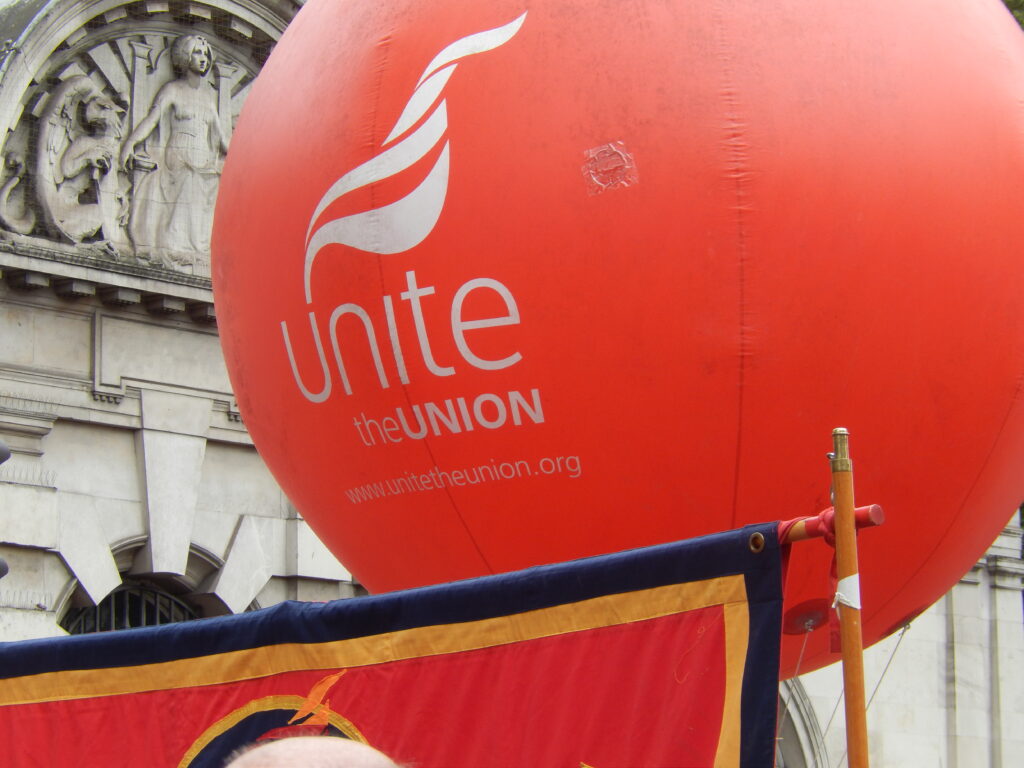By Sam Gleaden, Mental Health Worker
A recent UNISON study found that 60% of the UK workforce has witnessed or suffered from workplace bullying, with 30% of workers reporting having been bullied directly. A third of people who face bullying leave their jobs, with around half saying it affects their mental health and work performance.
This unbridled culture of bullying has steadily increased over the past 40 years. More authoritarian management methods have been interwoven with the heightened exploitation of workers. High levels of pressure and stress, caused by increased hours, lower pay and erosion of employment rights have become the norm in our modern capitalist economy.
What is Workplace Bullying?
Part of the problem with workplace bullying is that our understanding of it is often unclear. It can take the obvious form of verbal abuse, shouting, and threats of being sacked. But it can also be more subtle, hidden behind seemingly ‘normal’ working practices such as hyper-pressurised workloads, performance management procedures, or even neglect. This more general structural form of bullying, which supports the power of managers over the workforce, has been called ‘institutionalised bullying’.
Unsurprisingly, this type of behaviour is disproportionally aimed at already stigmatised groups. People who are disabled are twice as likely to be bullied at work. You are twice as likely to be bullied at work if you are disabled, 34% of women are bullied, compared to 23% of men, and 30% of Asian employees, compared with 23% of white employees.
Increasingly, bullying between colleagues comes in the form of office banter whereby those who are deemed different or come from a minority group will be discriminated against. Often managers turn a blind eye, or in some cases, even joins in.
Cliques and Hierarchies
Although many of us have the potential to bully others, modern capitalist workplaces create the social conditions that breed this type of behaviour.
The greater the power imbalance between workers and bosses, the more likely you are to see workplace bullying. Cultures In these environments have been described as “kiss up kick down”. Staff with “ambitious” bullying tendencies will attack those they deem weak or different while cosying up to management, who often act in a similar manner. This type of behaviour is rewarded as certain individuals in the “In” clique get promoted while others who are left out are more likely to be victimised. This behaviour is often perpetrated by white wealthy men who tend to dominate most workplaces.
Toxic Personalities.
There are particular personality traits and risk factors that make individuals more likely to become bullies. Traits such as narcissism, low self-worth, recent life stress and a short temper all contribute. When toxic personalities rule in a workplace the “kiss up, kick down” culture tends to follow.
Often bullying is a learned behaviour, either to get what you want by dominating others, or a method to deal with stress, by offloading onto the victim. Frequently with the worst bosses and ‘suck-up’ colleagues, both reasons are involved.
We have all likely had the experience of being managed by these types of toxic authoritarian characters who end up “power tripping” and being horrible to employees. The question is why are these people promoted and kept in their positions rather than being sacked?

Neoliberal Changes to the Work Environment
Since the 1980s and the neoliberal changes in our economy, there has been a significant rise in the amount of workplace bullying. Huge pressures have been piled on workers through wage cuts, increased hours, and destruction of working rights via casualised contracts.
This is all part of the global ideological push towards promoting “market discipline” as the most important driving force in society. The more competition there is between workers and between businesses the more productive and wealthier we are meant to become.
What the evidence is now showing is that this is exactly the type of hyper-competitive working environment that lends itself to bullying culture. This has also been seen in the public sector where artificial competition has been imposed via competitive tendering (outsourcing) and the target-obsessed culture of “new managerialism”. Since the Government of Tony Blair, targets are now applied to many measures of performance in order to recreate the pressures of private sector workplaces.
One study looking at the transformation of local councils from the 1980s found that the concentration of power to central government and local managers, away from elected officials (largely to stop left wing councils) led to an increase in bullying.
The study showed how the now commonplace outsourcing of services from the public sector to the private sector creates a natural clamp down on conditions as companies compete with each other to win contracts. This competitive outsourcing leads to contracts being granted based on price, not the quality of service. This has a detrimental impact on the quality of services provided, as well as on the well-being of the workforce, as an authoritarian management style is rewarded for squeezing workers to work harder for less pay.
On top of this, Human Resources (HR) processes, supposedly there to protect workers, have been exposed as actually protecting the interest of management. This culture can now be found to be growing in sectors such as education, health, and the service industries.

My Story of Workplace bullying
For three years, between 2018-2021, I worked for a charity called Hestia in a Mental Health Outreach service in West London. The first eighteen months of my three years were genuinely fantastic.
Unfortunately, new senior managers took over just before the start of the pandemic.
When the pandemic hit, our service went from being highly client-centred and valuing the autonomy of staff, to being completely target-driven. Draconian computer systems were put in place to check we had called enough clients, akin to a call centre. Managers called us every day to make sure we had made enough contacts. Our team leaders who defended the previous client-centred way of working were put under immense pressure to make us work harder, including being put on performance management plans themselves.
By the winter, when even NHS crisis services were doing minimal face-to-face meetings, we were told to find “creative” ways of getting clients to meet us face-to-face outside. Senior managers explained that the council commissioners (who tender contracts for the service) now wanted face-to-face appointments. This was despite the risk to staff and service users in a pre-vaccine world. With the service contract going up for tender again with the council, Hestia management became obsessed with finding quantitative measures of “success”.
This reckless management eventually led us to organise through Unite the Union. They helped us organise a large multi-service grievance complaint, as we found similar problems across the rest of the charity.
I was later personally targeted for raising concerns about practices and also threatened with performance management plans, as well as being banned from some team meetings (I’ve no doubt being a trade union rep motivated some of this behaviour).
Stress-related sick days soared, driving nearly everyone to leave the service (4-5 of the original 25 staff were left by summer 2021). Other staff were verbally attacked in private and told they were not up to the job. Two long-term members of staff who had disabilities came under particularly horrific targeting. Someone with severe arthritis was forced to come into work (while working from home was an option) when the lift was broken, forcing them up four flights of stairs. Thankfully Unite addressed this situation quickly.
My own example contained a particularly bad cocktail of all the classic factors that lead to workplace bullying. A cliquey authoritarian management environment full of toxic personalities mixed with the economic pressures of the modern neo-liberal economy.
The despotic area manager who was put in charge of our service told my team leader that she was “known as someone who got things done no matter what the cost”.
As well as sounding like a crass line from a contestant in the Apprentice, I can assure you that she was someone who enjoyed controlling and dominating others. But her words were indicative of something more important; she was there fundamentally because she got the job done from the perspective of her organisation, and the exploitative economic system that values extracting every ounce it can from its workers, “no matter what the cost”.

Why is Bullying a Trade Union Issue?
The conscious destruction of the trade union movement over the past 40 years has encouraged hyper-pressurised and authoritarian management styles.
Collective organising in the workplace addresses the power imbalance between workers and bosses. Two-thirds of workplace bullying happens to people in small groups or whole offices, rather than individuals. When colleagues act collectively behind the weight of the union, they are much more able to challenge bullying practices.
Trade unions can support workers by using aspects of employment law to hold bullying managers and dodgy HR teams to account; as well as raising awareness about workplace bullying. But ultimately, it is the collective power that workers hold which is key. Our ability to remove our labour en masse via a strike is the most important tool for defending against the rampant power of bosses.
There are a number of examples of individuals or groups being targeted by management (often for trying to organise) where the rest of the workforce steps in to support them through strike action. More recently, Unite has helped organise strikes against workplace bullying with charity workers and in local councils. More well-organised workplaces that reduce power imbalances will mean that bullying cultures are less likely to appear and can be fought against if they do.
As we are now seeing with the hot strike summer over the cost-of-living crisis, unions are leading the fight back against exploitative companies and the government. Capitalism needs workers who are isolated, divided and hopeless in order to exploit us. We need to relearn the lessons of previous generations and act collectively to fight bullying bosses and the economic system which creates them.
Republished, with permission, from the blog ‘The Sane Society, Capitalism and Our Mental Health Crisis.’ The original, with links, can be read here.



